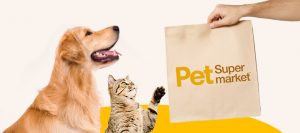Zoom on this impressive and little known canine discipline of non-Aficionados of greyhounds.
The greyhounds, who are born hunters, no longer have the opportunity to hunt because this discipline has been prohibited since 1844. To overcome this, a sport that is exclusively dedicated to them to allow them to express all their potential: The continuation of Lure or PVL. Zoom Today on this very little known discipline of no “aficionados” of greyhounds.
The continuation of Lure: What is it?
The continuation of the lure, or otherwise called rocking in English, is a canine sport that simulates hare hunt with direction changes of the lure (the “false” hare), obstacles to cross with vegetation, etc.
It is a race that is practised in the natural ground, but there is also another alternative in a syndrome where the dogs pursue a lure that does not change direction; this discipline is called racing and therefore stands out from PVL.
The greyhound races are quite ancient and are the subject of Paris in the same way as the horse races, but the PVL is a much more recent discipline (first race in 1993) that is closer to the hunt to which the hunt. Greyhounds no longer have access. It is almost exclusively a competitive sport, and many official races are organized by the specialized clubs and approved by the CSC CNA (National Commission for Utilities of the Central Canine Corporation).
During the competitions, these are two dogs who oppose and therefore pursue the trajectory of the simulated “game” that is actually a lure designed with rabbit skin. Regarding course lengths, they must be between 300 and 600 meters for small breeds such as the Whippet or the Italian Greyhound (PLI) and generally between 600 and 1000 meters for large breeds.
PVL: for which dogs?
These races are specifically reserved for greyhounds (races of the CFI Group 10), namely:
Azawakh,
English greyhound (Greyhound),
the Afghan greyhound (Tazi),
Persian greyhound (Saluki),
Arab greyhound (Sloughi),
Russian greyhound (benzoic),
Irish greyhound (Irish Wolfhound),
Scottish greyhound (Deerhound),
The whippet,
The Polish Greyhound,
Spanish greyhound (Galgo),
Hungarian greyhound,
The little Italian greyhound (fold).
However, only dogs registered on a final basis to the LOF (or a book of the origins recognized by the FCI) can participate in official races. In addition, registered greyhounds must have obtained upstream of their lure view patent that is a document that attests to their ability to participate in official competitions.
How to educate a dog at PVL?
As with any discipline, and education is often put, although some topics really have the pursuit, speed and agility in their genes. But you have to know that even a levy puppy coming down from a “high lineage” of race dogs can be very poor or not at all interested in PVL.
We sometimes have to be armed with patience to learn from his greyhound to “run” as part of a specific discipline.
Tip # 1: Classical Education
First of all, the greyhound in question must be well educated. It must be a good life companion on a daily basis and know the educational bases, without being a king of obedience either. It will always be much easier to learn from an already educated greyhound to continue.
Council n ° 2: Socialization
The greyhound must be properly socialized, whether with other dogs but also humans. These are generally very sensitive dogs that can quickly become timing or aggressive if they are not socialized. It is, therefore, a point not to neglect the education of his levy puppy.
Consulting n ° 3: The attraction for the lure
Then, it is then necessary to motivate the greyhound to pursue a lure (without it a real prey). This is very important and turns out to be a decisive step to hope to register one day his dog with official competitions. However, it is usually very easy to encourage his puppy to continue the lure because his instinct of play is often very present.
Little Aside: In the subjects I’m used to dealing with here, I generally put on the excess of the games of launcher who tend to reinforce the instinct of pursuit of dogs. But here, in the context of A specific work and learning of the continuation of the lure, the games of launch are particularly beneficial.
TIP 4: Motivation
If your puppy is not especially interested in the lure you propose (which is usually designed with plastic strips), do not hesitate to make it even more “interesting” by embellishing it with rabbit skin, sweets, etc.
In addition, to motivate your dog even more to continue the lure, do not hesitate to create fast and sudden movements with the lure to make it more prey for your dog.
Then, your attitude is also very important; if you are enthusiastic and cheerful, your puppy/dog will also be.
Finally, at the end of the continuation session you initiated (which should not be too long but especially proposed regularly), it frustrates you a little your dog and leaves it on his hunger; it will promote his motivation for the next meeting. Do not leave him the lure at disposal; hide it and come out only when you want to work the reinforcement of the pursuit.
Tip # 5: Registration for a club
As soon as your puppy is older enough to integrate into a club, do not hesitate to register it to start shopping with what is called a motor lure. This makes it possible to gradually accustom your dog to continue the lure with the background noise of the engine.
Then, of course, this allows you to socialize and educate your dog at this discipline while being supervised by qualified/passionate/experienced people.
Tip # 7: Starting boxes
You must also get used to your dog with start boxes that can be, without familiarization, quite traumatic for a dog, which is more of a greyhound. Here, the best being to advise by professionals and to use a specific material. However, you can also build cardboard start boxes at home to accustom your puppy from an early age and simulate shopping departures.
Tip # 8: The Port of the Muzzle
During official shopping, dogs are muzzled for their safety. So you have to teach your dog from an early age to wear and support a muzzle. This habituation must be progressive and especially always positive. I invite you to read our article dedicated to this subject to respect all the steps.
Tip # 9: Respect for the rhythm of the dog
Speed races require great vigilance as to the dog’s health status, preparation and recovery. It’s not a question of running a puppy that is not yet “formed” or a dog that has just eaten or who has injured or meet health problems.
In addition, races require assiduous and regular training. It is a demanding sport that requires optimal fitness.
Tip # 10: Solo races before group races
Finally, even if the races are always two or more, it is necessary to get used to his dog running solo because to get the patent of PVL, there is a step where the dog runs alone. In fact, if your dog has always been used to running “with friends”, it will be very difficult to motivate it to run alone.



